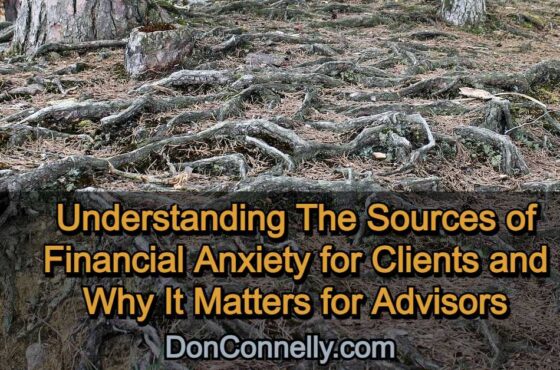The Slippery Slope from Empathy to Role Reversal, and How to Avoid It
 Successful financial advisors know that expressing empathy is critical in helping them to connect with clients and solidify their relationships. Clients need to know you understand their circumstances and what they may be going through at any given time. However, empathy taken too far can backfire when advisors find themselves sharing the same emotional distress as their clients, which can threaten their objectivity and compromise sound planning advice.
Successful financial advisors know that expressing empathy is critical in helping them to connect with clients and solidify their relationships. Clients need to know you understand their circumstances and what they may be going through at any given time. However, empathy taken too far can backfire when advisors find themselves sharing the same emotional distress as their clients, which can threaten their objectivity and compromise sound planning advice.
At the extreme, this can lead to advisors relinquishing control of the relationship to their clients and acquiescing to their desire “to fix the problem” in the short-term at the expense of their long-term plan. This type of role reversal is not uncommon for advisors who become emotionally vested in their clients, wanting to do what they can to ease their pain. Suddenly, the relationship is no longer being guided by rational, objective advice; but rather the behavioral impulses advisors are supposed to prevent, such as selling into a steep market decline, or abandoning the long-term strategy just to alleviate the immediate suffering.
Seek to understand but don’t feel their pain
While advisors should always strive to express empathy when called for, they must do so in the context of their primary role as an advisor. Sure, clients want you to feel their pain. But what they really need is your strong and steady guiding hand. You can still use empathy to show your clients you understand how they feel, and you can practice compassion to help them cope with the situation, which is what they really want. But, you should never allow your clients’ emotional burdens to become yours.
Here are three ways you can wall off your clients’ emotions while still demonstrating empathy and capacity.
#1. Stay laser-focused on your clients’ goals
During times of emotional distress, the last thing your clients are probably thinking of is their long-term goals. When they see their portfolio value plunging in a market downturn, all they want to do is stop the bleeding. You have the power to help them feel better—for the moment. However, you also have the obligation to keep your clients focused on their long-term goals.
Use these moments as an opportunity to review and clarify their goals and expectations. If your clients are skittish about market volatility, remind them every market decline has been followed by more enduring market climbs, proving that short-term fluctuations are temporary blips that will have little, if any impact on their long-term portfolio performance. That is why it’s essential not to waver from the long-term strategy.
#2. Manage your client’s expectations
When clients are distressed, they question everything, including the value of their advisor relationship and whether it’s meeting their expectations. Advisors need to take the lead in the relationship from the very beginning by engaging in constant two-way, transparent communication, not only to set reasonable expectations, but also to help clients keep their expectations in check.
An advisor’s most effective tool for managing expectations is proactive communications for handling both good and bad news. When done right, clients will expect you to take the lead on consequential decisions, which will minimize the influence of emotions in the decision.
#3. Be a coach
The greatest value advisors can bring to a relationship is to be a coach. Though they may not realize it, that’s what clients are looking for. Someone to educate them on the laws of planning and investing, help them develop a sound strategy based on their goals, keep them focused on their goals, hold them accountable for their decisions, and ensure they stay on track. That’s what good coaches do—without emotion and without passing judgement.
A good coach also shows empathy and compassion when clients are in distress, helping them cope through the situation but never wavering from their responsibility to keep them on track. That’s how you demonstrate your competence, professionalism, and your respect for the client.
If you need help developing and honing the powerful skills and techniques that will help you to educate, inspire and influence people into making smart decisions, watch this 3-minute video to learn how we can help!
See program details and enroll today!
Available as a self-paced training course with 24 videos and exercises, or a 12-week program featuring LIVE group coaching sessions with Don Connelly. If you’re serious about becoming an Elite Advisor, this is THE training course you cannot afford to miss. Learn more.



